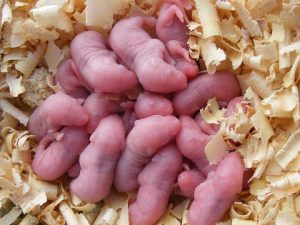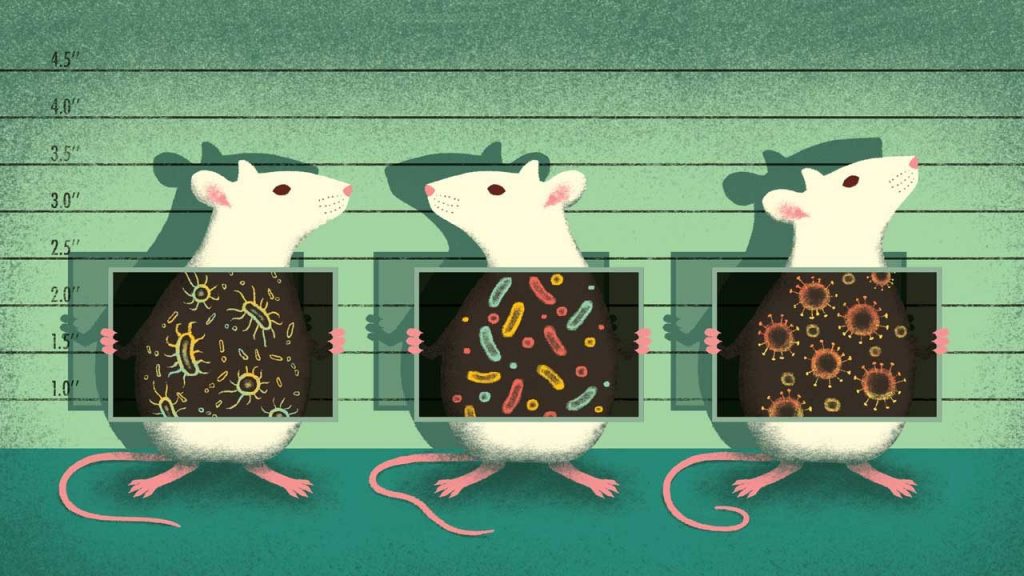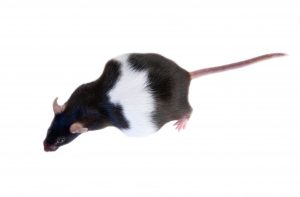

Solutions for your Germ-Free and Gnotobiotic Mice
Trillions of microorganisms are present in the human body. They consist of a remarkably diverse population more than 10,000 species that includes bacteria, fungi, and even some protozoans and nonliving viruses. This community of commensal, symbiotic, and pathogenic microorganisms is referred to as microbiota, and their genetic material constitutes our microbiome. Up to 3 percent of your body mass can be comprised of your own personal collection of microbiota (1). Different parts of the body have their unique microbiota such as the mouth, ear, nose, armpits, feet, and urogenital tract. However, the gut harbors the largest, most complex microbiota. As a result, a significant amount of research is focused on the gut and digestive tract to determine how their microbiota plays a role in human disease.
For several decades, germ-free animals have been used to study the interaction between the host and its microbiota. They are a critical tool to understand how microorganisms contribute to physiology and disease. Completely devoid of all microorganisms, germ-free mice offer a “clean slate” that can be studied as-is, or experimentally associated with microbes to test specific hypotheses. A whole range of therapeutic areas of research benefit from germ-free mice, including immunology, oncology, toxicology, infectious disease, gastroenterology..etc…
Functions of the microbiota
The microbiota has an impact on the entire body and a profound influence on our health, metabolism and disease. Key roles for the microbiome in metabolism, immune function, and resistance to pathogens have been identified. Below are some examples of its role in human disease:
- Some bacteria are beneficial, and provide essential services such as synthetizing vitamins and amino acids that the body cannot produce on its own, such a vitamin Bs and vitamin K. Only a limited number of bacteria are known to produce vitamin B12, three of which—Pseudomonas denitrificans, Bacillus megaterium, and Propionibacterium freudenreichii—are used for commercial production (2).
- Friendly bacteria such as Bifidobacterium and Lactobacillus, labelled as probiotics, can help digestion by breaking down food such as dietary fibers, absorbing nutrients, and preventing the take-over of “unfriendly” organisms that might cause diseases. They are among the first microbes to colonize the human gastrointestinal tract, and useful in treating eczema, yeast infections and diarrhea.
- More recently, gut microbiome has been shown to play a major role in the development and progression of diabetes and obesity, cholesterol regulation and cardiovascular disease, and even neurodevelopmental disorders.
- The gut microbiome also regulates the host’s immune system by moderating active vitamin A levels in the intestine, protecting the microbiome in the gut from excessive immune activity (3). This regulation can have important implications in the susceptibility to infections, hypersensitivity reactions, autoimmunity, and chronic inflammation such as inflammatory bowel disease, celiac disease or Crohn’s disease.
- On the other hand, certain bacteria are detrimental and promote for example carcinogenesis directly via the secretion of substances that lead to DNA damage (ROS by Enterococcus faecalis, nitric oxide by Helicobacter hepaticus, enterotoxin Bacteroides fragilis). The gut microbiome is also an important factor in mediating the host response and toxicity to various anticancer therapies.
Microbiota in research
Mice have become the model of choice for most studies in microbiome research. They allow the microbiota to be studied in controlled settings, helping in understanding the host-microbiota interactions and assess association between disease and the microbiota. The microbiome may consist of small microorganisms, but it can make a big impact on experimental results.
To learn more, see our blog : The Importance of Gut Microbiota in Reproducibility and Translatability in Research
There are different levels of control over the microbiota:
- Germ-free or axenic mice are completely devoid of all microorganisms. They must be maintained in isolators, under very rigorous handling protocols. Stringent testing regimens including microbial cultures are required to maintain and confirm the germ-free state.
- Gnotobiotic mice are born germ-free and inoculated with a panel of microorganisms. They thus have a defined and known microbiota. For example, humanized gnotobiotic mice are inoculated with a human gut microbiota sample. They are kept in isolators for long-term maintenance of their microbiological status
- Specific pathogen free (SPF) mice are defined by being tested free for a list of specific disease-causing pathogens that are excluded from these colonies to help raise health standards. This list varies from one institution to another. Apart from these excluded microorganisms, their exact microbiome is not known or controlled.
Different laboratory animal breeders provide mice with a wide range of health and microbiome status, such as The Jackson Laboratory (4), Taconic (5), or Charles River Laboratories (6). ClearH2O nutritional gel supplements can be an essential tool in supporting germ-free and gnotobiotic mice.
ClearH2O’s HydroGelTM, DietGel®, and MediGel® line of products are ultra-pasteurized at 190F for 15 minutes, barrier packed in Tyvek® medical packaging and treated with E-beam irradiation at 5 kGy. All products are tested by an independent laboratory to confirm they are free of microbiological contamination. Certificates of Analysis and Certificates of Processing are readily available. A growing number of researchers and veterinarians trust ClearH2O products for their germ-free and gnotobiotic mice.
To try our product, request a sample!
Read our microbiota blog series:
Solutions for your Germ-Free and Gnotobiotic Mice
The Importance of Gut Microbiota in Reproducibility and Translatability in Research
The Role of Diet in the Gut Microbiota: Standard vs. Purified Diets
References:
(1) TuftsNow – The Microbiome – Deborah Halber
(2) Biosynthesis of Vitamins by Probiotic Bacteria – Qing Gu and Ping Li
(3) Commensals Suppress Intestinal Epithelial Cell Retinoic Acid Synthesis to Regulate Interleukin-22 Activity and Prevent Microbial Dysbiosis – Grizote-Lake et al.
(4) The Jackson Laboratory – The Difference Between Germ-Free and Specific Pathogen-Free Mice – Jim Yeadon
(5) Taconic – What are Germ-free mice and how are they used in research –Philip Dubé
(6) Charles River Laboratory – Germ-Free Mice: Models, Products, and Services
Image from : Mouse microbes may make scientific studies harder to replicate – Kelly Servick

